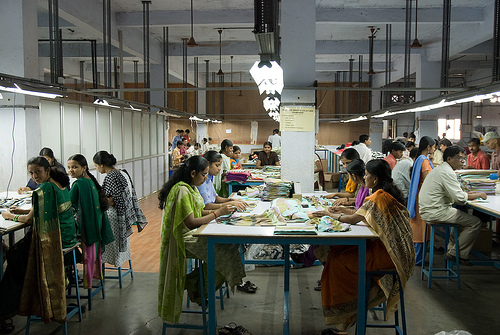Its recent growth success has lifted hundreds of millions out of poverty but it lags behind East Asia in terms of integration into the regional as well as the global economy. India’s global trade growth has been too narrowly focused on particular parts of the service sector. It has failed to capture the benefits of the dynamism of Asian growth. This failure is often attributed to the difficulties with its South Asian neighbours, but trade with its neighbours in East Asia, vis a vis which it is competitive in low-skilled manufactures that will employ a large proportion of the population, is also well below potential.
India’s agriculture accounts for a little less than 20 per cent of its GDP but employs about 60 per cent of the Indian labour force. Manufacturing has held a steady share of output at around 16 to 17 per cent of GDP during the two decades of economic liberalisation. India’s specialisation in manufacturing has been in capital intensive and skill intensive industries, largely a consequence of policy intervention, in which it has not so far had any competitive edge.
In this week’s essay, Veeramani Choorikkadan explains that to move forward, India needs to learn from East Asian experience. It needs to remove the shackles on its industrial sector by freeing up access to foreign investors, and reforming its rigid labour and bankruptcy laws that inhibit both domestic and foreign investment in manufacturing.
‘India’s import substitution policy regime created a bias in favour of capital- and skill-intensive manufacturing, and the reforms have not been comprehensive enough to remove this bias. The grand idea of India building ‘self-sufficient industry’ is meaningless in the current landscape of international commerce, where countries engage in trade by specializing at the level of distinct product lines and processes.’
It is important to create an environment that encourages entrepreneurs to search and identify opportunities in the vertically integrated global supply chains of various industries.
For India to become a manufacturing powerhouse, says Choorikkadan, India needs to open up to foreign direct investment, undertake serious labour market reforms, invest in physical infrastructure and get rid of regulatory and infrastructural impediments to integration into the Asian economy. That might be a development which also could carry the integration of the rest of South Asia into the regional and global economy along with India’s.

